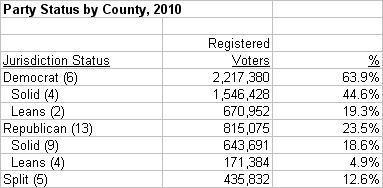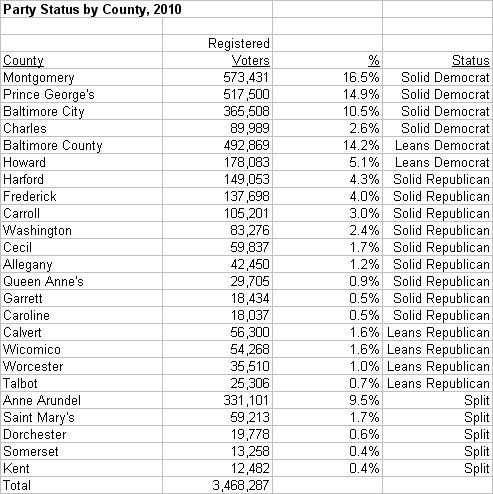Over the last week, we have looked at the performance of the Maryland Republican Party in the Democratic Big Three jurisdictions; Central and Southern Maryland; Western Maryland; Baltimore and Harford Counties and the Upper Eastern Shore; and the Central and Lower Eastern Shore. We considered voting percentages and win rates in federal, state and county elections. We did not emphasize voter registration by party because Maryland has lots of crossover voters.
What does it all mean together?
Here is the status of party competition in each of Maryland’s 24 jurisdictions.

The Democrats can compete, build their bench and regenerate their ranks in every region of the state except Western Maryland. They start every statewide election with a geographic edge accounting for 45% of Maryland voters. The GOP cannot compete in three of the state’s four largest jurisdictions (Baltimore City and Montgomery and Prince George’s Counties) and in the state’s fastest-growing county (Charles). Additionally, the Republicans have significant problems in the third-largest county (Baltimore) and the sixth-largest county (Howard). The broadest definition of geographic influence for the Republicans gives them a starting position of less than one-quarter of Maryland’s voters.
This math does not work for the GOP. If current conditions continue, they will not be able to compete on a statewide basis. They have to turn quite a few more counties their way or face the reality of minority status – forever.

